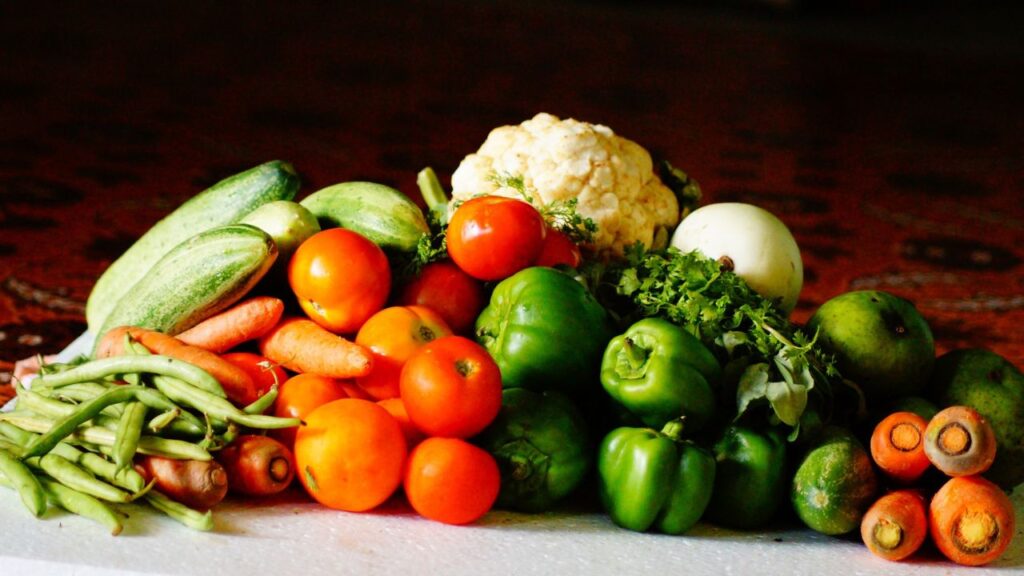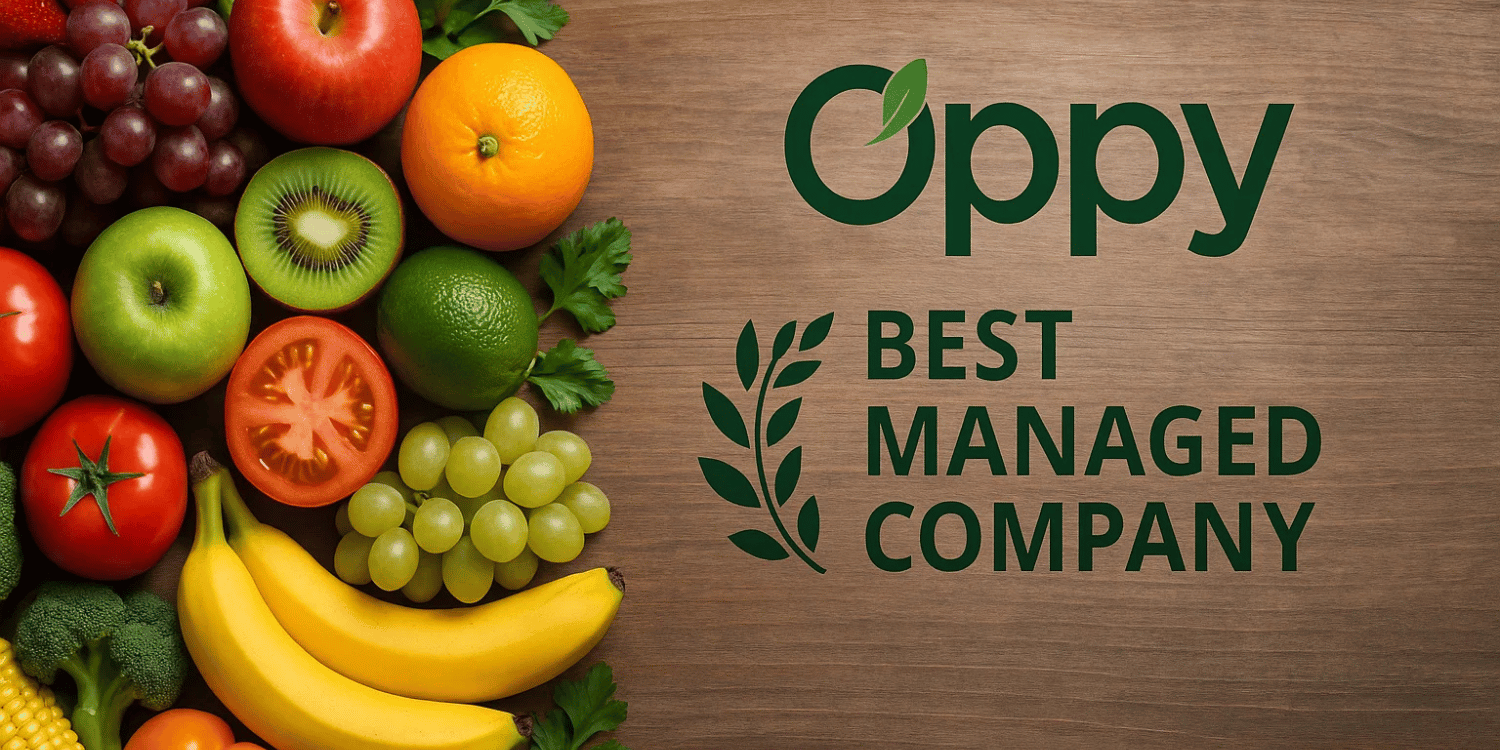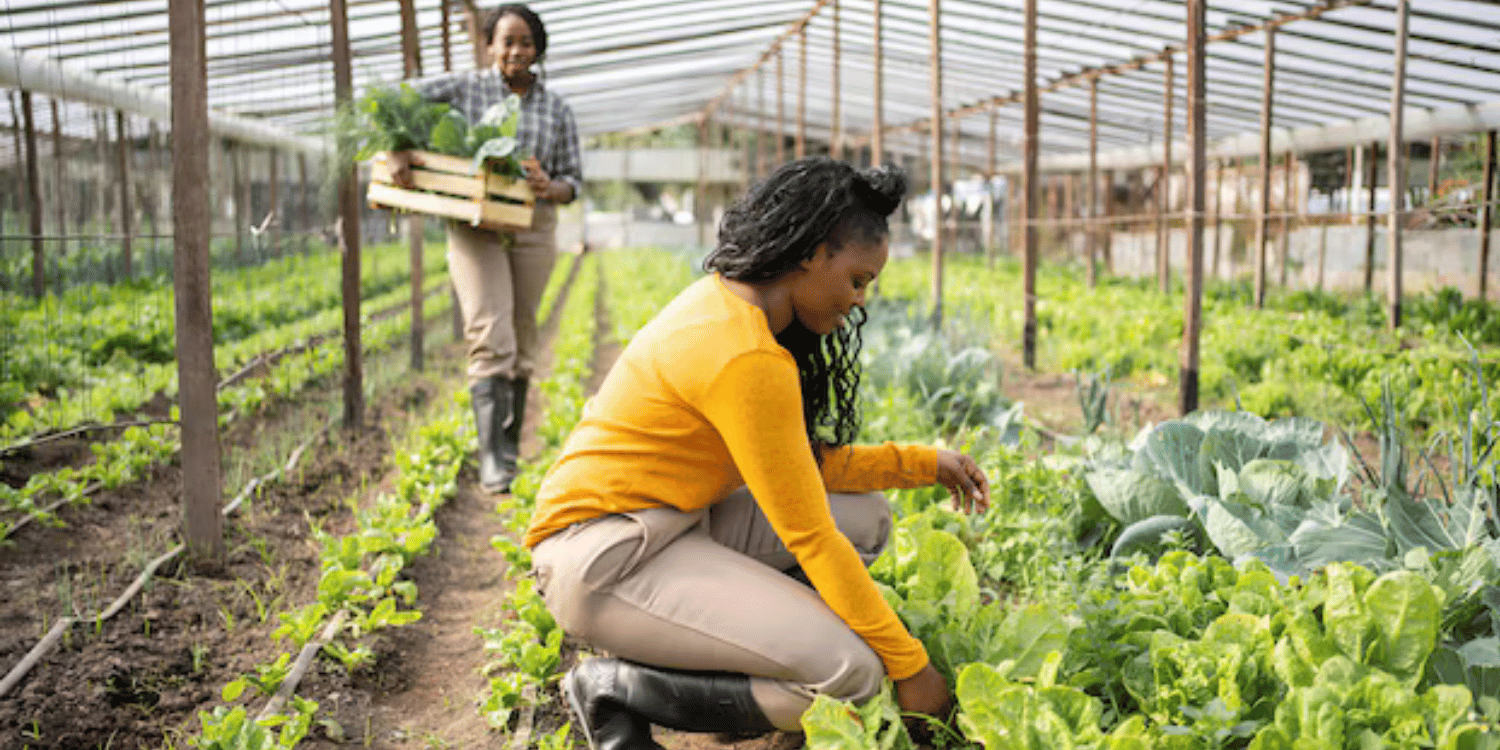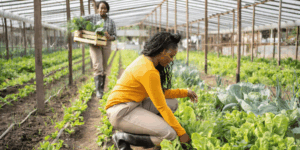As we make strides in modern agriculture, the emphasis is increasingly shifting towards nutrient-rich crops.
It becomes important now, more than ever, to discuss the innovations coming to the forefront. We see a growing interest in biofortified produce on a global scale.
Such crops are a potential game-changer in our efforts to combat malnutrition and support sustainable farming.
This article will dig in into some of the most significant and groundbreaking trends in this field. Get ready to gain insights into the future of nutrition-rich produce.
- Community gardens increasingly adopting biofortified produce.
- Emergence of drought-resistant, biofortified crops.
- Surge in demand for biofortified staple foods.
- Rapid commercialization of biofortified fruits and vegetables.
- Genetic modification as a tool for improved nutritional content.
While these key themes certainly shed some light on the ongoing trends in biofortified produce, there are also other related aspects to dig in into which offer equally insightful perspectives.
In the following sections, we will address these topics to provide a full overview of the current landscape and what the future might hold in the field of biofortified produce.
With issues such as the role of biofortification in food security, and how government policies influence the spread of biofortified crops, there’s a wealth of information left to explore.
Let me tell you, there’s definitely more ground to cover in this intriguing area of study, and I believe you will find the upcoming discussions beneficial and eye-opening.
Contents [hide]
- Trends To Watch In Biofortified Produce
- 1. Inclusion of Biofortified Produce in Community Gardens
- 2. Development of Drought-Resistant Biofortified Crops
- 3. Rising Demand for Biofortified Staple Foods
- 4. Commercialization of Biofortified Fruits and Vegetables
- 5. Genetic modification for enhanced nutritional content
- 6. Increased Government Funding for Biofortification Research
- 7. Biofortified Produce Tackling Global Malnutrition Issues
- The Bottom Line
Trends To Watch In Biofortified Produce
1. Inclusion of Biofortified Produce in Community Gardens
In Short: Incorporating biofortified crops into community gardens could tackle malnutrition, especially in low-income areas, by providing nutrient-enriched foods and improved climate resilience. This practice not only fosters self-sustenance and food security, but potentially revolutionizes urban agriculture and global health initiatives.
Community gardens have long played a pivotal role in urban areas, promoting not just the idea of sustainability, but also fostering communal relationships.
The incorporation of biofortified crops into these plots can yield immense benefits on multiple levels.
Biofortified crops are plants that have been genetically enhanced to contain higher levels of important nutrients and vitamins.
The design of these crops, specifically for higher nutritional output, directly confronts the issue of malnutrition that is particularly rampant in low-income communities where access to nutrient-rich foods can be limited.
The benefits of biofortified crops aren’t limited to their nutrient values alone as they are also designed to be more climate resilient and able to produce higher yields.
This can benefit community gardens in regions with harsh climates and bring about a greater level of food security.
It’s important to note a few examples of biofortified crops and how they could benefit community gardens.
- The most famous one would be Golden Rice, a strain of rice biofortified to produce beta carotene, the precursor to Vitamin A. This has great potential in communities where Vitamin A deficiency is prevalent.
- Another would be biofortified beans, which have been designed to contain higher levels of iron and other minerals. Incorporating these into community gardens can bolster the iron intake of the community’s residents.
- Last would be biofortified maize which is bred to have high Vitamin A contents.
This actively encourages communities to grow their own nutritionally enhanced foods, promoting self-sufficiency while combating issues of malnutrition and food insecurity.
The practice of urban agriculture stands to be revolutionised through such actions.
Given that modern urban living often leaves little space or time for individual agriculture, community gardens can act as a local hub for the growth and spread of these nutrient-packed biofortified crops.
This is particularly notable in urban areas where the cultivation of such crops could otherwise be challenging.
Ensuring that these biofortified crops are accessible to the public, especially in low-income urban areas, can have enormous implications for public health.
Through these, community gardens can therefore be perceived as not just communal spaces, but as key players in the fight against malnutrition.
The future may see these communal plots of land becoming central to local, and perhaps even global, health initiatives.
2. Development of Drought-Resistant Biofortified Crops
In Short: Developing biofortified crops resistant to drought, using biotechnological tools, is a significant innovation aimed at enhancing food security and combating malnutrition in drought-stricken areas. These genetically enhanced crops, developed through approaches such as genetic engineering and marker-assisted selection, not only offer drought-resistance, but also address larger issues like farmers’ income and climate adaptation.
The need for biofortified crops that can withstand severe weather patterns, specifically drought conditions, is becoming increasingly significant in many parts of the world.
In light of changing climate conditions, the development of drought-resistant crops stands as a significant innovation in the field of biofortification.
By using the latest biotechnological tools, researchers are attempting to enhance the nutritional content of crops while simultaneously improving their ability to cope with water stress.
These advances could play a significant role in tackling the chronic issue of malnutrition in various drought-prone parts of the world.
The process of developing these biofortified crops involves upgrading traditional plant breeding methods with genetic engineering, a progressive step in the realm of biofortification.
The immense potential of these genetically improved crops goes far beyond their drought-resistance feature.
They can contribute to a broader approach that addresses multiple issues like food security, farmer’s income, and climate adaptation.
The following are some of the tech-driven methods being employed in the development of drought-resistant biofortified crops:
- Genetic Engineering: Researchers are using sophisticated techniques to transfer specific genes that improve drought tolerance and nutritional content into crops.
- Cross-Breeding: Cross-breeding different varieties of a crop to bring together the desired characteristics into one plant is another method being employed.
- Marker-Assisted Selection: This method involves selectively breeding plants that display a certain trait which is identified by a specific genetic ‘marker’.
Despite significant strides in this field, the development of drought-resistant biofortified crops is not without its challenges.
There is an ongoing debate regarding the ethical implications and long-term effects of such genetically modified crops.
However, given the imminent threat of food insecurity in the wake of climate change, many argue that these concerns should be weighed against the overall advantages of these advancements.
While the commercial viability of such crops needs to be assessed, their potential in addressing global malnutrition is undeniable.
Furthermore, the rise in government funding for research in this area indicates a recognition of the importance of biofortification in our global food system.
Pro Tip: The development of drought-resistant biofortified crops using the latest biotechnological tools is a significant innovation that could address malnutrition in drought-prone parts of the world, despite ongoing debate about the ethical and long-term implications of genetically modified crops.
Innovation in biofortified crops, especially those tailored for drought conditions, signifies an exciting trend to watch within this space.
Striking an effective balance between managing possible repercussions and leveraging the opportunities presented by this technology could provide a pathway for a more resilient and nutritious food system.
3. Rising Demand for Biofortified Staple Foods
In Short: The growing awareness about the health benefits of biofortified staple foods has triggered a huge demand across all sections of society. Increased understanding of diet-health relation, global health campaigns, and rising preference for affordable nutritious food options are key drivers of this trend.
Over the recent years, there is a growing recognition of the critical role that biofortified staple foods can play in addressing various health issues, including malnutrition and micronutrient deficiencies.
This elevated awareness is primarily driven by the global public health campaign for fighting chronic diseases and the growing trend of health-conscious consumers.
Consequently, this has triggered an unprecedented demand for biofortified staple foods.
These are not just confined to the affluent classes, but the inclination toward healthier diets is seen across different sections of society.
Biofortified foods like maize, rice, wheat, sweet potatoes, and beans that are high in vitamins and minerals are increasingly becoming popular amongst consumers.
Consumers’ heightened understanding of the connection between diet and health has massively influenced this rise in demand.
Given the context, it is essential to illustrate some of the key factors driving the demand for biofortified staple foods:
- Increased awareness about the importance of dietary intake in maintaining health and wellness.
- The global aspiration to address chronic malnutrition and iron-deficiency anemia.
- The rising prevalence of non-communicable diseases linked to dietary factors.
- Escalating need for affordable nutritious food options around the world.
- Rising consumer interest in functional foods that offer health benefits beyond basic nutrition.
These listed factors have contributed in shaping the current growth trajectory of the biofortified produce market.
The surging popularity of these types of foods is indicative of an emerging trend.
For instance, an increasing number of consumers are making conscious decisions to include more biofortified foods in their diet, viewing it as a means to enhance their overall nutrient intake.
Moreover, emerging evidence suggests that biofortified produce can offer remarkable health benefits, such as boosting the immune system, preventing heart disease, and reducing the risk of some cancers.
This growing body of scientific evidence has acted as a catalyst, boosting consumer confidence and consequently, driving demand even further.
Pro Tip: Consider incorporating biofortified staple foods in your diet, as they are high in vitamins and minerals and can play a critical role in addressing various health issues like malnutrition and micronutrient deficiencies.
Furthermore, with governments and health organizations globally advocating for healthier diets and lifestyles, the trend toward biofortified produce is expected to sustain in the near future.
As such, it is reasonable to predict that the rising demand for biofortified staple foods as a key trend is here to stay.
4. Commercialization of Biofortified Fruits and Vegetables
In Short: The commercialization of biofortified fruits and vegetables offers a solution to nutritional deficiencies and is gaining popularity due to their enhanced nutrients. Challenges such as consumer acceptance, government regulations, and economic feasibility must be addressed for successful commercialization, though promising early success with certain crops suggests a bright future for this sector.
The commercialization of biofortified fruits and vegetables is a critical progression in addressing nutritional deficiencies, and this field continues to evolve.
Instead of traditionally grown produce, there is a rising preference for these nutrient-enriched alternatives.
An extensive array of fruits and vegetables is being biofortified, from staple crops like rice and potatoes to vitamin-filled produce such as carrots and oranges.
Commercialization of these goods is not purely about profit; it also plays an immense role in displaying the viability of biofortified produce to farmers, retailers, and consumers.
In the rearing of these produce, environmental considerations such as resistance to pests, climate resilience, and improved yield also makes an attractive selling point.
However, there are factors that need to be addressed in order for successful commercialization of biofortified produce.
Here, they are as follows:
- Consumer acceptance: While biofortified products are nutritionally superior, they must also appeal in terms of taste and appearance to gain widespread acceptance.
- Government regulations: Policies and standards regarding the genetic modification and fortification of food must be adhered to, ensuring that these products are safe for consumption.
- Economic feasibility: The cost of growing, marketing, and selling these products must be balanced to suit both producers and consumers for this venture to be commercially viable.
Preliminary successes have been seen in the commercialization efforts of certain biofortified crops.
For instance, biofortified orange-fleshed sweet potatoes and vitamin A-enriched bananas have gained notable market traction.
Also in Africa, the popularization of a biofortified grain, ‘Orange Maize’, has shown tremendous promise.
This maize variety, higher in vitamin A, has seen success in terms of farmer adoption, production, and acceptance among consumers, illustrating the potential for biofortified crop commercialization.
Trends in this sector suggest a likely expansion in the range and scale of biofortified products on store shelves in future.
Important: The commercialization of biofortified fruits and vegetables is a critical progression in addressing nutritional deficiencies, with a rising preference for these nutrient-enriched alternatives, and key factors for successful commercialization include consumer acceptance, adherence to government regulations, and economic feasibility.
As continuous advancements unfold in biofortification research and technology, it paves the way for even more nutrient-dense fruits and vegetables to feed the populace.
This makes the potential of commercialization in biofortification not only encouraging but crucial for both the agricultural sector and public health.
5. Genetic modification for enhanced nutritional content
In Short: Genetic modification is pivotal for enhancing nutritional content in biofortified crops and plays a key role in combating global malnutrition. Despite challenges including social acceptance and government policies, its promises in revolutionizing our food systems seem limitless.
The role of genetic modification in the improvement of nutritional content of biofortified produce is one of the fascinating realms of contemporary agriculture.
Not only does it present a sure way to create crops that are more resilient to harsh environmental conditions, but it’s also pivotal in the fight against malnutrition.
The fact that significant strides are being made in the development of biofortified crops with modified genetic makeup to yield higher nutrient content than their conventional counterparts can’t go unnoticed.
This process involves the artful insertion or modification of genes in a plant’s genetic makeup to yield produce having a specific nutritional enhancement.
The fascinating scope of genetic modification in nutritional enhancement is explicitly seen in efforts made to combat micronutrient deficiencies.
These efforts, however, are not grounded in a vacuum; they closely correspond to the dire realities associated with health issues caused by malnutrition, such as stunted growth in children.
While there are multiple ways that this genetic modification is undertaken, the more common ones are worth highlighting:
- The first case is the transgenic approach where genes from an organism not of the same species are used to achieve the desired nutritional enhancement.
- There’s also the non-transgenic approach which involves manipulating the plant’s own genes or introducing genes from closely related species to enhance a particular nutritional component.
Upon achieving the desired nutritional enhancement, the resulting produce offers vast benefits.
For instance, these crops can be planted in any part of the world, essentially eliminating geographical restrictions that often affect the availability of certain important nutrients, essentially curbing malnutrition.
In fact, the ripple effects of this advancement are so significant that it’s powers the drive towards the creation of even more nutritionally enhanced crops.
Although this process of genetic modification is often met with controversy and resistance, it’s hard to downplay its potential in addressing malnutrition on a global scale.
Despite the numerous challenges genetic modification is up against, ranging from social acceptance to governmental policies, its role in enhancing the nutritional content of biofortified crops is crystal clear.
And as more progress is made in this field, the potentials of genetic modification in revolutionizing our food systems and combating malnutrition seem almost limitless.
Let me tell you, in contemplating the trends in biofortified produce, it’s crystal clear that genetic modification for enhanced nutritional content remains a compelling and promising area of focus.
More so than ever, the world needs such innovative strategies that pave the way for healthier and more accessible food options for everyone.
6. Increased Government Funding for Biofortification Research
In Short: Government funding is growing for research and development of biofortified produce, understanding its potential to deal with malnutrition and improve dietary health. The funds are used for research, developing nutrient-rich crop varieties, field trials, and awareness campaigns, driving global collaboration, and encouraging farmers to adopt such crops.
One crucial trend to observe in the realm of biofortified produce is the surge of government funding being poured into research and development.
Government funding plays a pivotal role in the biofortification sector as it aids in both the development and the expansion of related technologies and initiatives.
This increase in financial support is largely a reflection of the growing recognition of biofortification’s potential to tackle global malnutrition issues.
Indeed, more and more governments are beginning to see the importance of investing in improving dietary health at a national scale, and biofortification provides a promising, cost-effective strategy for doing so.
However, the allocation and usage of these funds should be done judiciously, thereby ensuring efficient utilization and optimal outcomes in the biofortified produce industry.
Within this context, let’s have a look at some of the major areas where these funds are specifically directed:
- Broad-based research and development into biofortification technologies and methodologies.
- Creation of biofortified crop varieties, particularly those fortified with important nutrients that are generally lacking in regular diets.
- Field trials and testing, which are crucial for understanding the performance and viability of these biofortified crops under diverse environmental conditions.
- Implementation of awareness campaigns about the benefits of biofortified produce.
Undeniably, government funding plays a substantial role in accelerating these aspects, fostering innovation and facilitating the availability of biofortified produce to the masses.
Moreover, government funding also drives global collaborations in biofortification research, as it allows scientists and researchers from different parts of the globe to work together on shared objectives.
Governments are, therefore, not only investing within their borders but also fostering international cooperation to ensure the development and adoption of successful biofortification strategies on a global scale.
Furthermore, increased government funding often results in the creation of various financial incentives for farmers and businesses to adopt and proliferate the usage of biofortified crops, hence fostering a more sustainable and nutritious food system.
The growing trend of increased government funding for biofortification research signifies that we are on the right path towards a healthier future, with highly nutritious food being more accessible and affordable for everyone.
Pro Tip: To unlock the full potential of biofortified produce, increasing and strategically investing in government funding for biofortification research is crucial.
However, it is also a reminder that continuous efforts, both in terms of continual research and consistent funding, would be required to further advance the biofortification technology and its applications.
In a nutshell, the key to unlocking the full potential of biofortified produce lies, to a significant extent, in persistent government funding and strategic investments in biofortification research.
7. Biofortified Produce Tackling Global Malnutrition Issues
In Short: Biofortified crops, developed to enhance nutritional content, offer a practical solution to global malnutrition particularly prevalent in developing regions with limited dietary diversity. As research advances, these affordable, locally cultivable crops not only promise to alleviate health issues but also enhance the robustness of local farming systems and their yields.
The issue of global malnutrition remains a pressing concern in many regions worldwide.
Recent trends in biofortified produce provide a promising solution to this pressing issue.
Notably, biofortified crops are being specifically developed to enhance their nutritional content.
These improvements are intended to contribute significantly to reducing deficiencies in vitamins and minerals.
Many people in developing regions of the world suffer from such nutritional deficiencies, primarily due to a lack of diversity in their diets.
Introducing biofortified crops into these diets has the potential to significantly alleviate these health problems.
Such an approach is realistic and holds immense potential. Not only are these crops affordable, they can be cultivated locally, which eliminates the need for costly importation.
The following list provides a brief insight into the potential impact of biofortified crops in tackling malnutrition:
- Increased iron content in staple foods like rice and beans can help combat anemia, which is particularly prevalent among women and children.
- The introduction of Vitamin A-rich sweet potatoes and corn can lead to a reduction in night blindness and other vitamin A deficiency-related health issues.
- Zinc-fortified grains will contribute to the reduction of diarrheal diseases, which are a leading cause of death in children under five years old.
Moreover, the integration of biofortified crops can significantly contribute to the sustainability and resilience of local farming systems.
Many biofortified varieties, such as drought-resistant and pest-resistant crops, are more robust and can thrive under harsh conditions.
The introduction of such crops is thus also likely to contribute to increased yields and improved livelihoods for farming communities.
As efforts intensify to combat global malnutrition, the role of biofortified produce becomes increasingly critical.
Important: Recent trends in biofortified produce, which are crops specifically developed to enhance their nutritional content, provide a promising solution to the pressing issue of global malnutrition and have potential to significantly alleviate health problems in regions suffering from nutritional deficiencies due to a lack of diverse diets.
From a global perspective, the broader implementation and acceptance of biofortification strategies will be key in achieving the World Health Organization’s goal of reducing malnutrition by 2025.
While there is still much work to be done, the significant strides made in biofortification research and the growing demand for biofortified crops indicate that this trend is here to stay, and is set to play an instrumental role in resolving global nutrition challenges.
The Bottom Line
Biofortified produce is a rapidly evolving field with a strong future, driven by numerous emerging trends. Innovations in this field stand to offer tremendous benefits such as improved nutritional content and increased resilience to climate change. But as we look to the future, careful management and regulation will be necessary to ensure these positive outcomes are realized in a way that is safe and equitable. A transformative shift is indeed well underway in the realm of biofortified produce, promising healthier food for all while also addressing pressing global issues such as malnutrition and food security.




















